- Home
- William Shakespeare
The Oxford Shakespeare: The Complete Works Page 2
The Oxford Shakespeare: The Complete Works Read online
Page 2
From grammar the boys progressed to studying works of classical and neo-classical literature. They might read anthologies of Latin sayings and Aesop’s Fables, followed by the fairly easy plays of Terence and Plautus (on whose Menaechmi Shakespeare was to base The Comedy of Errors). They might even act scenes from Latin plays. As they progressed, they would improve their command of language by translating from Latin into English and back, by imitating approved models of style, and by studying manuals of composition, the ancient rules of rhetoric, and modern rules of letter-writing. Putting their training into practice, they would compose formal epistles, orations, and declamations. Their efforts at composition would be stimulated, too, by their reading of the most admired authors. Works that Shakespeare wrote throughout his career show the abiding influence of Virgil’s Aeneid and of Ovid’s Metamorphoses (both in the original and in Arthur Golding’s translation of 1567). Certainly he developed a taste for books, both classical and modern: his plays show that he continued to read seriously and imaginatively for the whole of his working life.
After Shakespeare died, Ben Jonson accused him of knowing ‘small Latin and less Greek’; but Jonson took pride in his classical knowledge: a boy educated at an Elizabethan grammar school would be more thoroughly trained in classical rhetoric and Roman (if not Greek) literature than most present-day holders of a university degree in classics. Modern languages would not normally be on the curriculum. Somehow Shakespeare seems to have picked up a working knowledge of French—which he expected audiences of Henry V to understand—and of Italian (the source of Othello, for instance, is an Italian tale that had not been published in translation when he wrote his play). We do not know whether he ever travelled outside England.
Shakespeare must have worked hard at school, but there was a life beyond the classroom. He lived in a beautiful and fertile part of the country, with rivers and fields at hand. He had the company of brothers and sisters. Each Sunday the family would go to Stratford’s splendid parish church, as the law required; his father, by virtue of his dignified status, would sit in the front pew. There Shakespeare’s receptive mind would be impressed by the sonorous phrases of the Bible, in either the Bishops’ or the Geneva version, the Homilies, and the Book of Common Prayer. From time to time travelling players would visit Stratford. Shakespeare’s father would have the duty of licensing them to perform; probably his son first saw plays professionally acted in the Guildhall below his schoolroom.
Shakespeare would have left school when he was about fifteen. What he did then is not known. One of the earliest legends about him, recorded by John Aubrey around 1681, is that ‘he had been in his younger years a schoolmaster in the country’. John Cottom, who was master of the Stratford school between 1579 and 1581 or 1582, and may have taught Shakespeare, was a Lancashire man whose family home was close to that of a landowner, Alexander Houghton. Both Cottom and Houghton were Roman Catholics, and there is some reason to believe that John Shakespeare may have retained loyalties to the old religion. When Houghton died, in 1581, he mentioned in his will one William Shakeshafte, possibly a player. The name is a possible variant of Shakespeare; conceivably Cottom found employment in Lancashire again for his talented pupil as a tutor who also acted. On the other hand, the name ‘Shakeshaft’, common in Lancashire, is not found in Warwickshire. If Shakespeare did leave Stratford, he was soon back home. On 28 November 1582 a bond was issued permitting him to marry Anne Hathaway of Shottery, a village close to Stratford. She was eight years his senior, and pregnant. Their daughter, Susanna, was baptized on 26 May 1583, and twins, Hamnet and Judith, on 2 February 1585. Though Shakespeare’s professional career (described in the next section of this Introduction) was to centre on London, his family remained in Stratford, and he maintained his links with his birthplace till he died and was buried there.
I. The Shakespeare coat of arms, from a draft dated 20 October 1596, prepared by Sir William Dethick, Garter King-of-Arms
One of the unfounded myths about Shakespeare is that all we know about his life could be written on the back of a postage stamp. In fact we know a lot about some of the less exciting aspects of his life, such as his business dealings and his tax debts (as may be seen from the list of Contemporary Allusions, pp. lxv-lxviii). Though we cannot tell how often he visited Stratford after he started to work in London, clearly he felt that he belonged where he was born. His success in his profession may be reflected in his father’s application for a grant of arms in 1596, by which John Shakespeare acquired the official status of gentleman. In August of that year William’s son, Hamnet, died, aged eleven and a half, and was buried in Stratford. Shakespeare was living modestly, and, so far as we know, alone in the Bishopsgate area of London, north of the river, in October of the same year, but in the following year showed that he looked on Stratford as his real home by buying a large house, New Place. It was demolished in 1759.
In October 1598 Richard Quiney, whose son was to marry Shakespeare’s daughter Judith, travelled to London to plead with the Privy Council on behalf of Stratford Corporation, which was in financial trouble because of fires and bad weather. He wrote the only surviving letter addressed to Shakespeare; as it was found among Quiney’s papers, it was presumably never delivered. It requested a loan, possibly on behalf of the town, of £30—a large sum, suggesting confidence in his friend’s prosperity. In 1601 Shakespeare’s father died, and was buried in Stratford. In May of the following year Shakespeare was able to invest £320 in 107 acres of arable land in Old Stratford. In the same year John Manningham, a London law student, recorded a piece of gossip that gives us a rare contemporary anecdote about the private life of Shakespeare and of Richard Burbage, the leading tragedian of his company:
Upon a time when Burbage played Richard III there was a citizen grew so far in liking with him that before she went from the play she appointed him to come that night unto her by the name of Richard the Third. Shakespeare, overhearing their conclusion, went before, was entertained, and at his game ere Burbage came. Then, message being brought that Richard the Third was at the door, Shakespeare caused return to be made that William the Conqueror was before Richard the Third.
In 1604 Shakespeare was lodging in north London with a Huguenot family called Mountjoy; in 1612 he was to testify in a court case relating to a marriage settlement on the daughter of the house. The records of the case provide our only transcript of words actually spoken by Shakespeare; they are not characterful. In 1605 Shakespeare invested £440 in the Stratford tithes, which brought him in £60 a year; in June 1607 his elder daughter, Susanna, married a distinguished physician, John Hall, in Stratford, and there his only grandchild, their daughter Elizabeth, was baptized the following February. In 1609 his mother died there, and from about 1610 his increasing involvement with Stratford along with the reduction in his dramatic output suggests that he was withdrawing from his London responsibilities and spending more time at New Place. Perhaps he was deliberately devoting himself to his family’s business interests; he was only forty-six years old: an age at which a healthy man was no more likely to retire then than now. If he was ill, he was not totally disabled, as he was in London in 1612 for the Mountjoy lawsuit. In March 1613 he bought a house in the Blackfriars area of London for £140: he is not known to have lived in it. Also in 1613 the last of his three brothers died. In late 1614 and 1615 he was involved in disputes about the enclosure of the land whose tithes he owned. In February 1616 his second daughter, Judith, married Thomas Quiney, causing William to make alterations to the draft of his will, which he signed on 25 March. His widow was entitled by law and local custom to part of his estate; he left most of the remainder to his elder daughter, Susanna, and her husband. He died on 23 April, and was buried two days later in a prominent position in the chancel of Holy Trinity Church. A monument was commissioned, presumably by members of his family, and was in position by 1623. The work of Gheerart Janssen, a stonemason whose shop was not far from the Globe Theatre, it incorporates a half-length effigy whi
ch is one of the only two surviving likenesses of Shakespeare with any strong claim to authenticity.
As this selective survey of the historical records shows, Shakespeare’s life is at least as well documented as those of most of his contemporaries who did not belong to great families; we know more about him than about any other dramatist of his time except Ben Jonson. The inscription on the Stratford landowner’s memorial links him with Socrates and Virgil; and in the far greater memorial of 1623, the First Folio edition of his plays, Jonson links this ‘Star of poets’ with his home town as the ‘Sweet swan of Avon’. The Folio includes the second reliable likeness of Shakespeare, an engraving by Martin Droeshout which, we must assume, had been commissioned and approved by his friends and colleagues who put the volume together. In the Folio it faces the lines signed ‘B.1.’ (Ben Jonson) which we print beneath it. Shakespeare’s widow died in 1623, and his last surviving descendant, Elizabeth Hall (who inherited New Place and married first a neighbour, Thomas Nash, and secondly John Bernard, knighted in 1661), in 1670.
2. Shakespeare’s monument, designed by Gheerart Janssen, in Holy Trinity Church, Stratford-upon-Avon
Shakespeare’s Professional Career
We do not know when Shakespeare joined the theatre after his marriage, or how he was employed in the mean time. In 1587 an actor of the Queen’s Men—the most successful company of the 1580s—died as a result of manslaughter shortly before the company visited Stratford. That Shakespeare may have taken his place is an intriguing speculation. Nor do we know when he began to write. It seems likely (though not certain) that he became an actor before starting to write plays; at any rate, none of his extant writings certainly dates from his youth or early manhood. One of his less impressive sonnets—No. 145—apparently plays on the name ‘Hathaway’ (‘ “I hate” from hate away she threw’), and may be an early love poem; but this is his only surviving non-dramatic work that seems at all likely to have been written before he became a playwright. Possibly his earliest efforts in verse or drama are lost; just possibly some of them survive anonymously. It would have been very much in keeping with contemporary practice if he had worked in collaboration with other writers at this stage in his career. We believe that other writers, including Thomas Nashe, contributed to I Henry VI, that George Peele is part-author of Titus Andronicus, and that Shakespeare wrote part of Edward III (not included in the first edition of the Complete Works). Other writers’ hands have been plausibly detected in The First Part of the Contention (2 Henry VI) and Richard Duke of York (3 Henry VI).
The first printed allusion to Shakespeare dates from 1592, in the pamphlet Greene’s Groatsworth of Wit, published as the work of Robert Greene, writer of plays and prose romances, shortly after he died. Mention of an ‘upstart crow’ who ‘supposes he is as well able to bombast out a blank verse as the best of you’ and who ‘is in his own conceit the only Shake-scene in a country’ suggests rivalry; though parody of a line from Richard Duke of York (3 Henry VI) shows that Shakespeare was already known on the London literary scene, the word ‘upstart’ does not suggest a long-established author.
It seems likely that Shakespeare’s earliest surviving plays date from around 1590, possibly earlier: they include comedies (The Two Gentlemen of Verona and The Taming of the Shrew), history plays based on English chronicles (The First Part of the Contention, Richard Duke of York), and a pseudo-classical tragedy (Titus Andronicus). We cannot say with any confidence which company (or companies) of players these were written for; Titus Andronicus, at least, seems to have gone from one company to another, since according to the title-page of the 1594 edition it had been acted by the Earl of Derby‘s, the Earl of Pembroke’s, and the Earl of Sussex’s Men. Early in his career, Shakespeare may have worked for more than one company. A watershed was the devastating outbreak of plague which closed London’s theatres almost entirely from June 1592 to May 1594. This seems to have turned Shakespeare’s thoughts to the possibility of a literary career away from the theatre: in spring 1593 appeared his witty narrative poem Venus and Adonis, to be followed in 1594 by its tragic counterpart, The Rape of Lucrece. Both carry dedications over Shakespeare’s name to Henry Wriothesley, third Earl of Southampton, who, though aged only twenty in 1593, was already making a name for himself as a patron of poets. Patrons could be important to Elizabethan writers; how Southampton rewarded Shakespeare for his dedications we do not know, but the affection with which Shakespeare speaks of him in the dedication to Lucrece suggests a strong personal connection and has encouraged the belief that Southampton may be the young man—or one of the young men—addressed so lovingly in Shakespeare’s Sonnets.
3. Henry Wriothesley, 3rd Earl of Southampton (1573-1624), at the age of twenty: a miniature by Nicholas Hilliard
Whether Shakespeare began to write the Sonnets at this time is a vexed question. Certainly it is the period at which his plays make most use of the formal characteristics of the sonnet: Love’s Labour’s Lost and Romeo and Juliet, for example, both incorporate sonnets into their structure; but Henry V, probably dating from 1599, has a sonnet as an Epilogue, and in All’s Well That Ends Well (1606-7) a letter is cast in this form, and so is Jupiter’s speech in Cymbeline (1610). Allusions within the Sonnets suggest that they were written over a period of at least three years. At some later point they seem to have been rearranged into the order in which they were printed. Behind them—if indeed they are autobiographical at all—lies a tantalizingly elusive story of Shakespeare’s personal life. Many attempts have been made to identify the poet’s friend (or friends), the rival poet (or poets), and the dark woman (or women) who is both the poet’s mistress and the seducer of his friend; none has achieved any degree of certainty.
After the epidemic of plague dwindled, a number of actors who had previously belonged to different companies amalgamated to form the Lord Chamberlain’s Men. In the first official account that survives, Shakespeare is named, along with the famous comic actor Will Kemp and the tragedian Richard Burbage, as payee for performances at court during the previous Christmas season. The Chamberlain’s Men rapidly became the leading dramatic company, though rivalled at first by the Admiral’s Men, who had Edward Alleyn as their leading tragedian. Shakespeare stayed with the Chamberlain’s (later King’s) Men for the rest of his career as actor, playwright, and administrator. He is the only prominent playwright of his time to have had so stable a relationship with a single company.
With the founding of the Lord Chamberlain’s Men, Shakespeare’s career was placed upon a firm footing. It is not the purpose of this Introduction to describe his development as a dramatist, or to attempt a thorough discussion of the chronology of his writings. The Introductions to individual works state briefly what is known about when they were composed, and also name the principal literary sources on which Shakespeare drew in composing them. More detailed discussion of dating is to be found in the Textual Companion. The works themselves are arranged in a conjectured order of composition. There are many uncertainties about this, especially in relation to the early plays. The most important single piece of evidence is a passage in a book called Palladis Tamia: Wit’s Treasury, by a minor writer, Francis Meres, published in 1598. Meres wrote: As Plautus and Seneca are accounted the best for comedy and tragedy among the Latins, so Shakespeare among the English is the most excellent in both kinds for the stage; for comedy, witness his Gentlemen of Verona, his Errors, his Love Labour’s Lost, his Love Labour’s Won, his Midsummer’s Night Dream, and his Merchant of Venice; for tragedy, his Richard II, Richard III, Henry IV, King John, Titus Andronicus, and his Romeo and Juliet.
Some of the plays that Meres names had already been published or alluded to by 1598; but for others, he supplies a date by which they must have been written. Meres also alludes to Shakespeare’s ‘sugared sonnets among his private friends’, which suggests that some, if not all, of the poems printed in 1609 as Shakespeare’s Sonnets were circulating in manuscript by this date. Works not mentioned by Meres that are believ
ed to have been written by 1598 are the three plays concerned with the reign of Henry VI, The Taming of the Shrew, Edward III, and the narrative poems.
Shakespeare seems to have had less success as an actor than as a playwright. We cannot name any of his roles for certain, though seventeenth-century traditions have it that he played Adam in As You Like It, and Hamlet’s Ghost—and more generally that he had a penchant for ‘kingly parts’. Ben Jonson listed him first among the ‘principal comedians’ in Every Man in his Humour, acted in 1598, when he reprinted it in his 1616 Folio, and Shakespeare is also listed among the performers of Jonson’s tragedy Sejanus in 1603. He was certainly one of the leading administrators of the Chamberlain’s Men. Until 1597, when their lease expired, they played mainly in the Theatre, London’s first important playhouse, situated north of the River Thames in Shoreditch, outside the jurisdiction of the City fathers, who exercised a repressive influence on the drama. It had been built in 1576 by James Burbage, a joiner, the tragedian’s father. Then the company seems to have played mainly at the Curtain until some time in 1599. Shakespeare was a member of the syndicate responsible for building the first Globe theatre, in Southwark, on the south bank of the Thames, out of the dismantled timbers of the Theatre in 1599. Initially he had a ten-per-cent financial interest in the enterprise, fluctuating as other shareholders joined or withdrew. It was a valuable share, for the Chamberlain’s Men won great acclaim and made substantial profits. After Queen Elizabeth died, in 1603, they came under the patronage of the new king, James I; the royal patent of 19 May 1603 names Shakespeare along with other leaders of the company. London was in the grip of another severe epidemic of plague which caused a ban on playing till the following spring. The King’s processional entry into London had to be delayed; when at last it took place, on 15 March 1604, each of the company’s leaders was granted four and a half yards of scarlet cloth for his livery as one of the King’s retainers; but the players seem not to have processed. Their association with the King was far from nominal; during the next thirteen years—up to the time of Shakespeare’s death—they played at court more often than all the other theatre companies combined. Records are patchy, but we know, for instance, that they gave eleven plays at court between I November 1604 and 31 October 1605, and that seven of them were by Shakespeare: they included older plays—The Comedy of Errors, Love’s Labour’s Lost—and more recent ones—Othello and Measure for Measure. The Merchant of Venice was played twice.

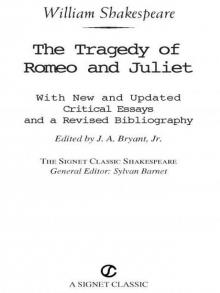 Romeo and Juliet
Romeo and Juliet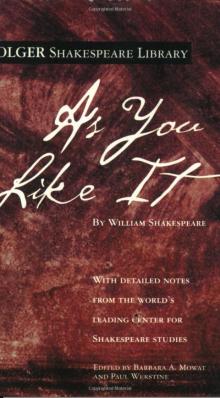 As You Like It (Folger Shakespeare Library)
As You Like It (Folger Shakespeare Library)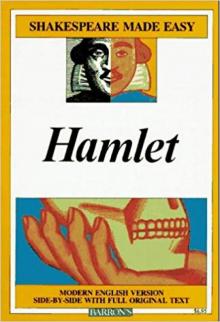 Hamlet
Hamlet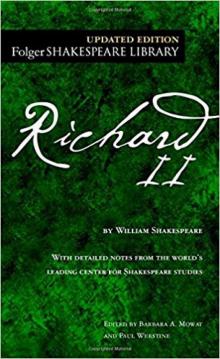 Richard II (Folger Shakespeare Library)
Richard II (Folger Shakespeare Library)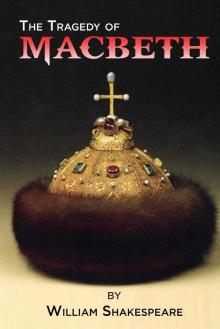 Macbeth
Macbeth Henry V
Henry V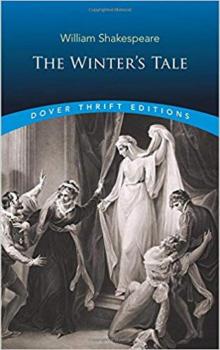 The Winter's Tale
The Winter's Tale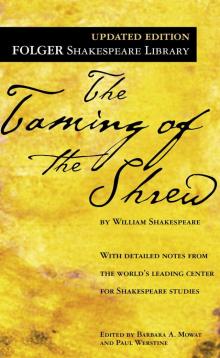 The Taming of the Shrew
The Taming of the Shrew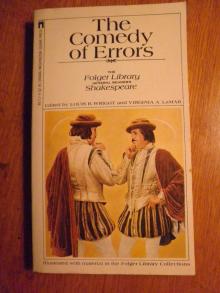 The Comedy of Errors
The Comedy of Errors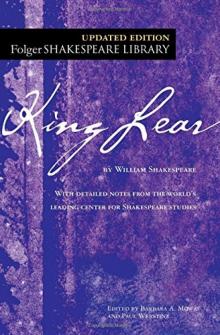 King Lear (Folger Shakespeare Library)
King Lear (Folger Shakespeare Library)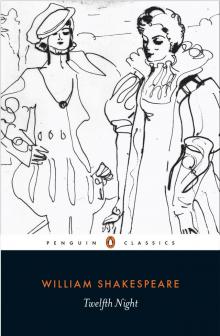 Twelfth Night
Twelfth Night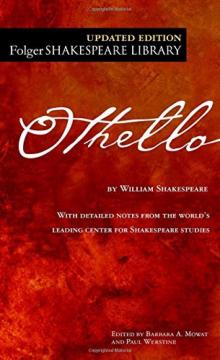 Othello
Othello The Two Gentlemen of Verona
The Two Gentlemen of Verona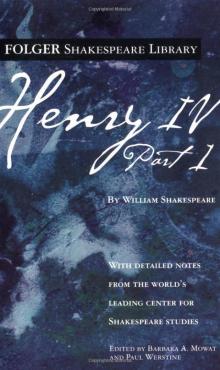 Henry IV, Part 1 (Folger Shakespeare Library)
Henry IV, Part 1 (Folger Shakespeare Library)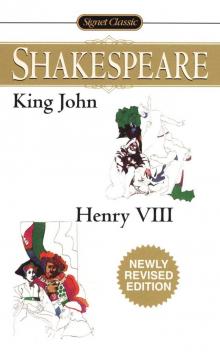 King John/Henry VIII (Signet Classics)
King John/Henry VIII (Signet Classics) The Tempest
The Tempest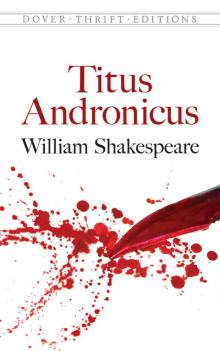 Titus Andronicus (Dover Publications)
Titus Andronicus (Dover Publications)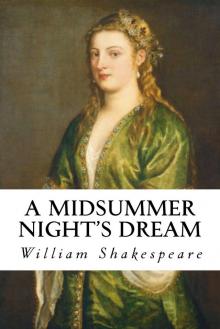 A Midsummer Night's Dream
A Midsummer Night's Dream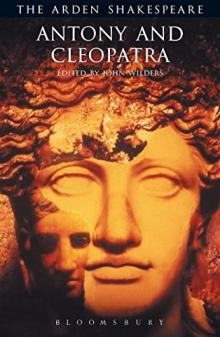 Antony and Cleopatra (Arden Shakespeare: Third Series)
Antony and Cleopatra (Arden Shakespeare: Third Series) The Oxford Shakespeare: Henry IV, Part 2 (Oxford World's Classics)
The Oxford Shakespeare: Henry IV, Part 2 (Oxford World's Classics)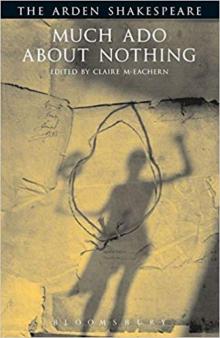 Much Ado About Nothing (Arden Shakespeare: Third Series)
Much Ado About Nothing (Arden Shakespeare: Third Series)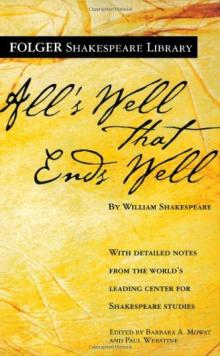 All's Well That Ends Well
All's Well That Ends Well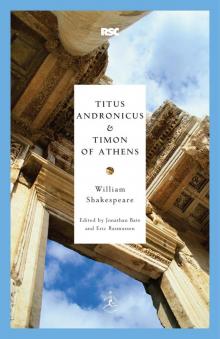 Titus Andronicus & Timon of Athens
Titus Andronicus & Timon of Athens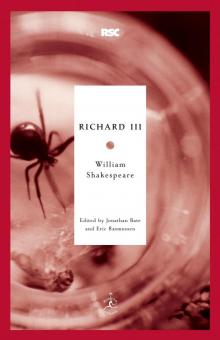 Richard III (Modern Library Classics)
Richard III (Modern Library Classics) Coriolanus
Coriolanus srsly Hamlet (OMG Shakespeare)
srsly Hamlet (OMG Shakespeare)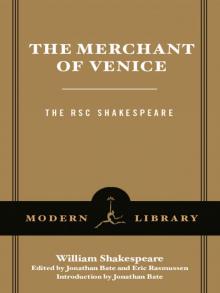 The Merchant of Venice
The Merchant of Venice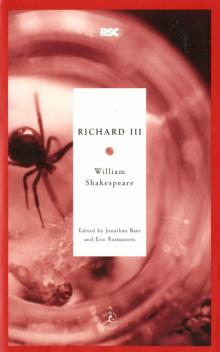 Richard III
Richard III Richard II
Richard II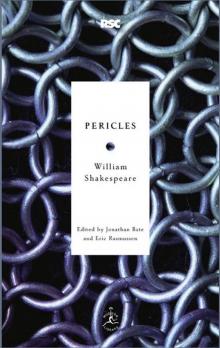 Pericles
Pericles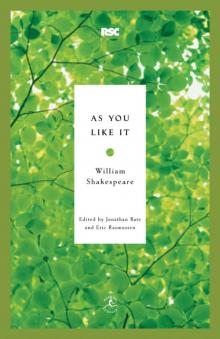 As You Like It
As You Like It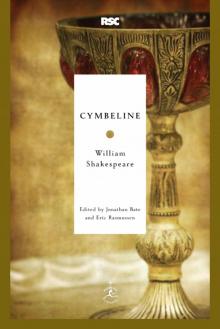 Cymbeline
Cymbeline Alls Wel that ends Well
Alls Wel that ends Well YOLO Juliet
YOLO Juliet A Midsummer Night #nofilter
A Midsummer Night #nofilter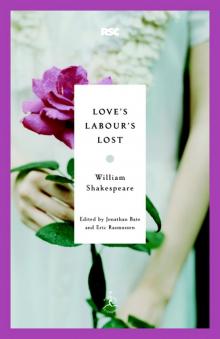 Love's Labour's Lost
Love's Labour's Lost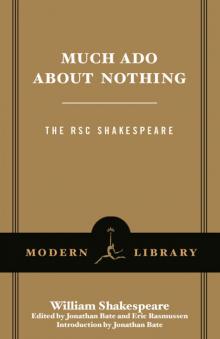 Much Ado About Nothing
Much Ado About Nothing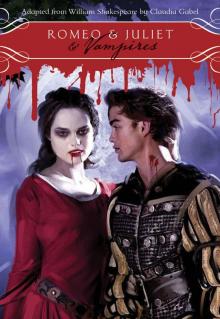 Romeo & Juliet & Vampires
Romeo & Juliet & Vampires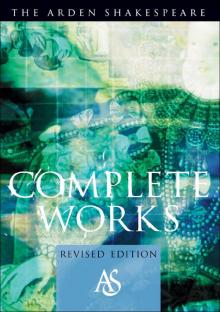 The Arden Shakespeare Complete Works
The Arden Shakespeare Complete Works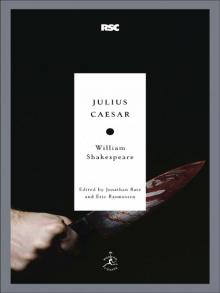 Julius Caesar
Julius Caesar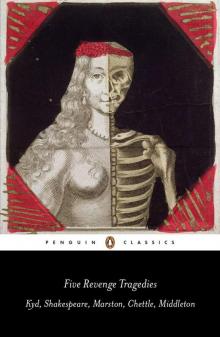 Five Revenge Tragedies: The Spanish Tragedy, Hamlet, Antonio's Revenge, The Tragedy of Hoffman, The Revenger's Tragedy (Penguin Classics)
Five Revenge Tragedies: The Spanish Tragedy, Hamlet, Antonio's Revenge, The Tragedy of Hoffman, The Revenger's Tragedy (Penguin Classics)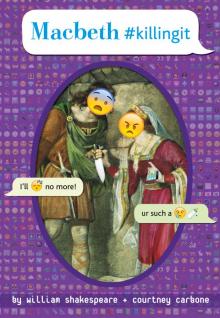 Macbeth #killingit
Macbeth #killingit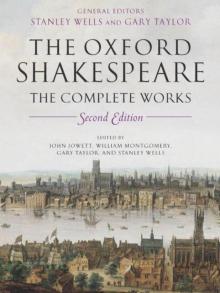 The Oxford Shakespeare: The Complete Works
The Oxford Shakespeare: The Complete Works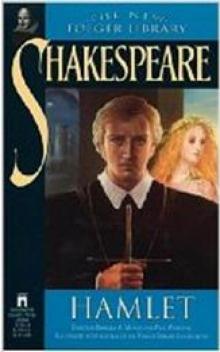 Hamlet, Prince of Denmark (Collins edition)
Hamlet, Prince of Denmark (Collins edition)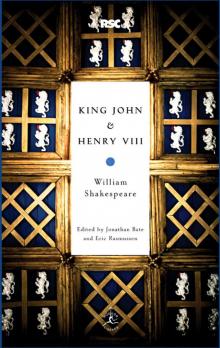 King John & Henry VIII
King John & Henry VIII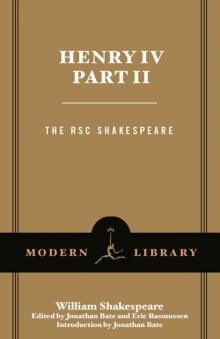 Henry IV, Part 2
Henry IV, Part 2 Complete Plays, The
Complete Plays, The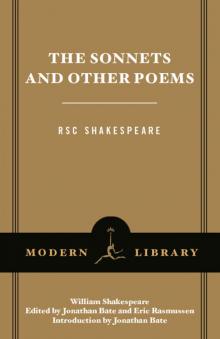 The Sonnets and Other Poems
The Sonnets and Other Poems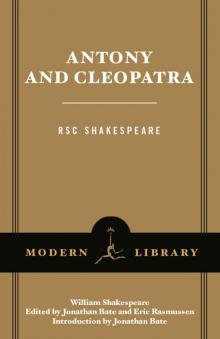 Antony and Cleopatra
Antony and Cleopatra Henry IV, Part 1
Henry IV, Part 1 Is This a Dagger Which I See Before Me?
Is This a Dagger Which I See Before Me? The Complete Works of William Shakespeare In Plain and Simple English (Translated)
The Complete Works of William Shakespeare In Plain and Simple English (Translated)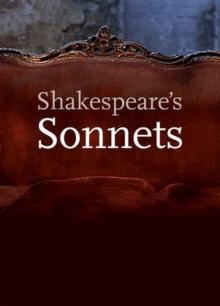 The Sonnets
The Sonnets